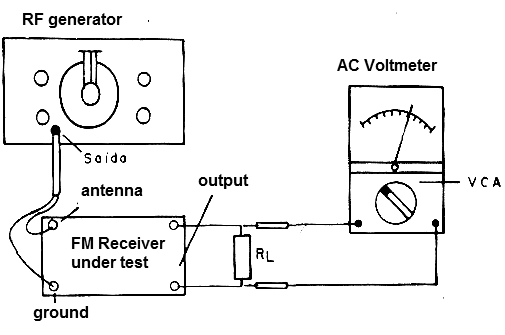Procedure
The circuit for analysis of receiver sensitivity is shown in the figure below.

For squelch receivers, this feature must be turned off.
At the output of the receiver, we connect a load resistor (10W wire) which has the approximate impedance of the speaker (which must be turned off). The voltmeter will be connected in the scale that allows to read the tension developed in the resistor when the volume is all open.
To measure sensitivity, we initially set the signal generator with the modulator tone so that it is picked up by the receiver. We reduce the signal and open the gain of the receiver to the maximum.
We then gradually increase the signal strength from zero and at the same time observe the needle of the multimeter. The time will come when the needle stops rising, indicating the saturation of the circuit.
At this point, we stop increasing the output signal strength of the RF generator, and check its value in the settings. If this occurs with the button in position 7 (from a scale of 0 to 9) and with the multiplication factor of x0.01 mV we will have a signal intensity of 70 nV, this being the sensitivity of the receiver analyzed.



